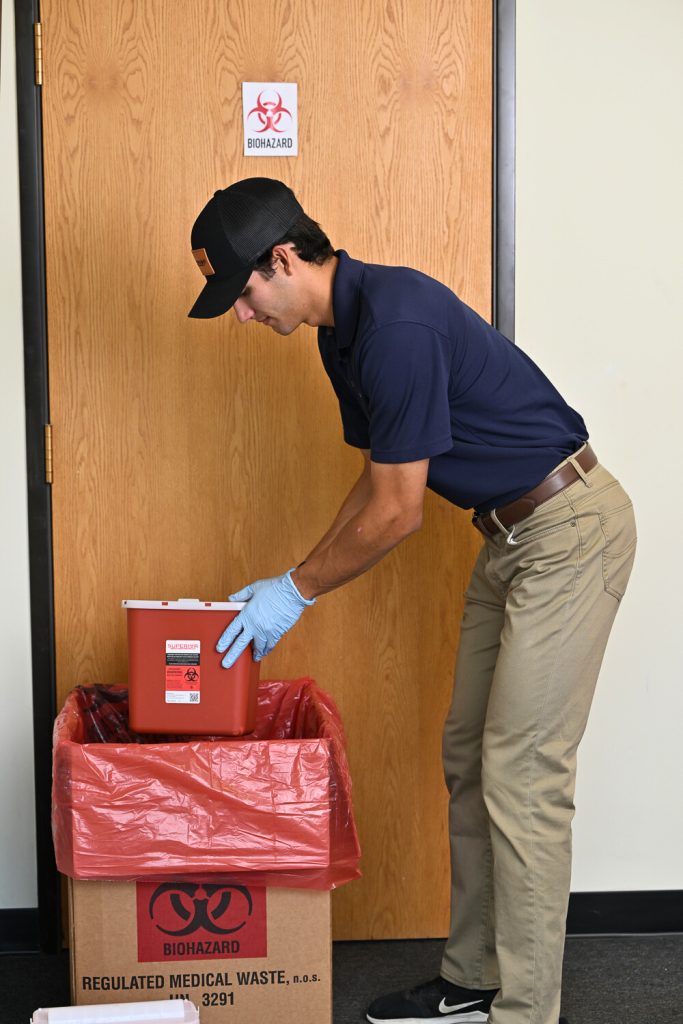
Proper medical waste management is critical for healthcare facilities to ensure safety, compliance, and environmental responsibility. Establishing an efficient waste management system requires careful planning and implementation. In this step-by-step guide, we will walk you through the key elements of implementing an effective medical waste management system. From conducting waste audits to staff training and documentation, we will cover all the essential aspects. Let’s get started!
Title: A Step-by-Step Guide to Implementing an Efficient Medical Waste Management System
Introduction
Proper medical waste management is critical for healthcare facilities to ensure safety, compliance, and environmental responsibility. Establishing an efficient waste management system requires careful planning and implementation. In this step-by-step guide, we will walk you through the key elements of implementing an effective medical waste management system. From conducting waste audits to staff training and documentation, we will cover all the essential aspects. Let’s get started!
Step 1: Conduct a Waste Audit
Before implementing any waste management system, it’s crucial to conduct a waste audit to assess the types and volumes of medical waste generated within your facility. Here’s what you need to do:
- Categorize waste streams: Identify different types of medical waste generated, such as sharps, infectious waste, pharmaceutical waste, or chemical waste.
- Measure waste quantities: Determine the approximate amount of each waste stream produced by conducting waste measurements over a designated period.
- Analyze waste generation patterns: Identify any trends or areas where waste reduction measures can be implemented, such as optimizing procurement practices or reducing packaging waste.
Step 2: Develop a Waste Management Plan
Based on the findings from the waste audit, develop a comprehensive waste management plan tailored to your facility’s needs. Consider the following aspects:
- Segregation and containment: Clearly define protocols for proper segregation of different waste streams and provide appropriate containers for safe containment.
- Storage and labeling: Establish guidelines for storing waste safely, ensuring that containers are properly labeled with the correct waste classification and handling instructions.
- Transportation and disposal: Determine the most suitable transportation method and select a licensed waste disposal partner to ensure proper treatment and disposal of each waste stream.
Step 3: Train and Educate Staff
A well-trained and educated staff is crucial for successful waste management implementation. Consider the following training steps:
- Provide comprehensive training: Educate staff on waste segregation, handling, storage, and disposal protocols, emphasizing the importance of compliance with regulatory requirements.
- Offer refresher courses: Conduct regular training sessions to reinforce best practices, introduce updates in waste management regulations, and address any emerging challenges.
- Encourage staff engagement: Foster a culture of responsibility and accountability by encouraging staff to actively participate in waste management initiatives and report any issues or suggestions.
Step 4: Establish Documentation and Recordkeeping
Accurate documentation and recordkeeping are essential for maintaining compliance and tracking waste management practices. Consider the following:
- Waste manifests and tracking: Maintain detailed records of waste shipments, including collection dates, volumes, and disposal facility information, as required by regulations.
- Incident reporting: Establish a system for reporting and documenting any incidents, such as spills or accidents related to medical waste, to ensure proper investigation and preventive measures.
- Regular audits and reviews: Conduct periodic internal audits to assess the effectiveness of the waste management system and make necessary improvements based on the findings.
Conclusion
Implementing an efficient medical waste management system is a critical step for healthcare facilities to ensure safety, compliance, and environmental stewardship. By following this step-by-step guide, you can establish a comprehensive waste management system that safeguards the well-being of staff, patients, and the environment. Remember, continuous monitoring, staff training, and documentation are key to maintaining an effective waste management system over time.